Range Rover Evoque: Battery Junction Box (BJB) TD4 2.2L Diesel
Removal
NOTES:
Removal steps in this procedure may contain installation details.
Some variation in the illustrations may occur, but the essential information is always correct.
All vehicles
1. Refer to: Specifications (414-01 Battery, Mounting and Cables, Specifications).
2. Refer to: Central Junction Box (CJB) (418-00 Module Communications Network, Removal and Installation).
3. Refer to: Instrument Panel Upper Section (501-12 Instrument Panel and Console, Removal and Installation).
4.
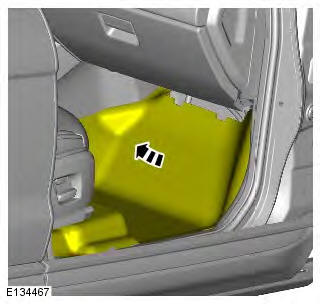
5.
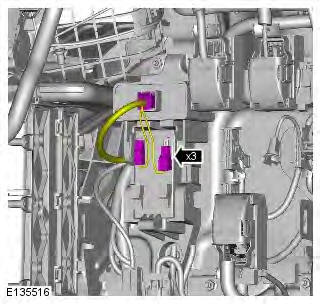
6. Torque: 10 Nm
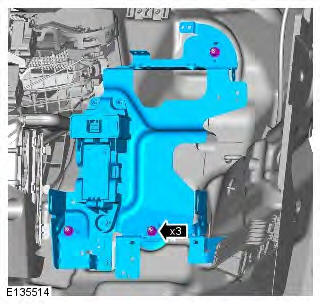
7.
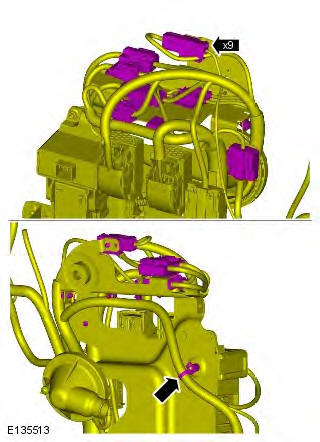
8.
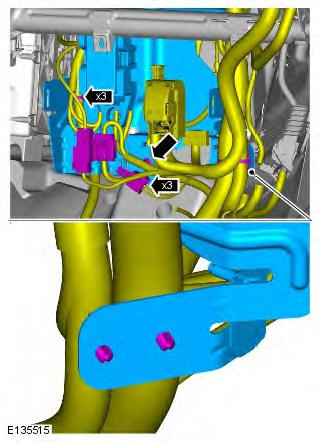
9.
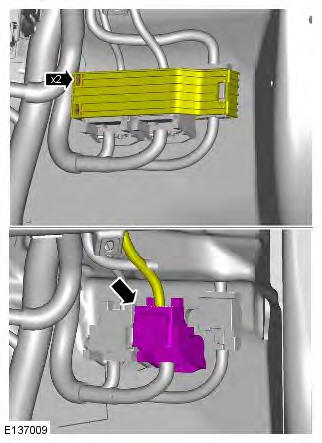
10. Torque: 10 Nm
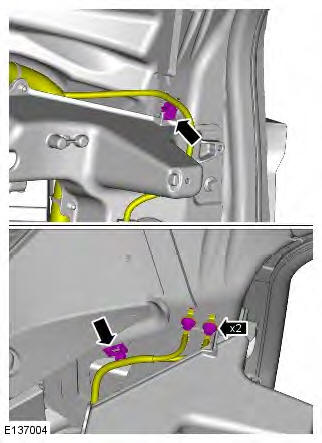
11.
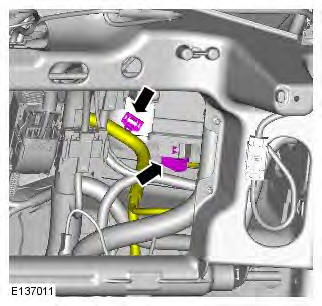
Vehicles with auxiliary heating
12.
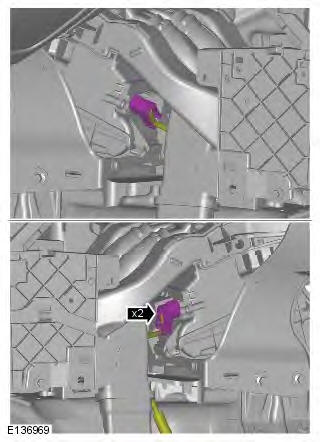
13.
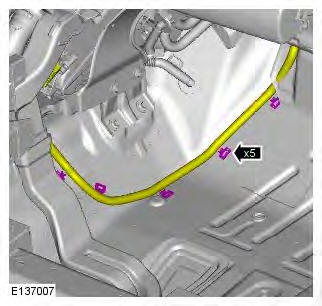
All vehicles
14.
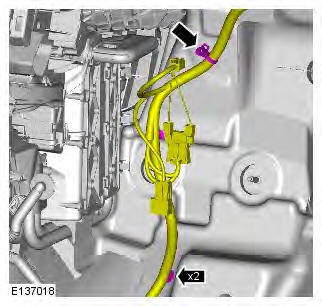
15.
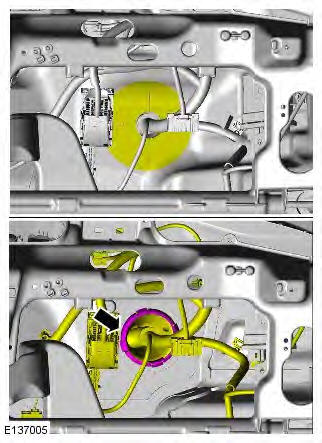
16. Refer to: Anti-Theft Alarm Horn with Integral Battery (419-01A Anti-Theft - Active, Removal and Installation).
17.
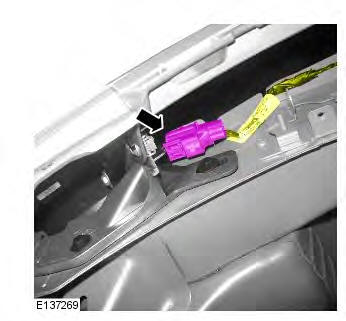
18. Torque: 10 Nm
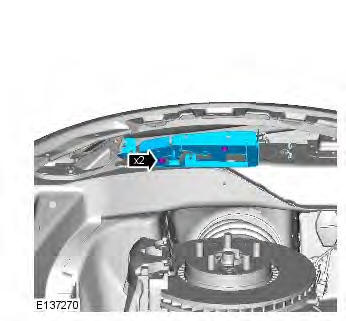
19. WARNING: Be prepared to collect escaping fluid.
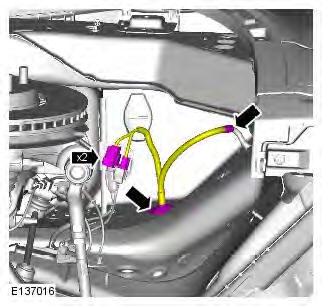
20.
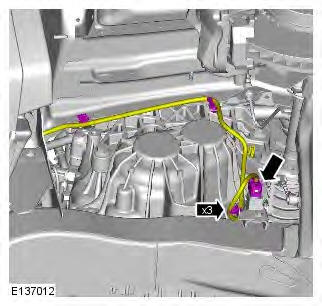
21. NOTE: LH illustration shown, RH is similar. Remove the front RH wheel arch liner.
Refer to: Fender Splash Shield (501-02 Front End Body Panels, Removal and Installation).
Vehicles with fuel fired booster heater
22. Refer to: Fuel Fired Booster Heater - TD4 2.2L Diesel (412-02 Auxiliary Climate Control, Removal and Installation).
All vehicles
23.
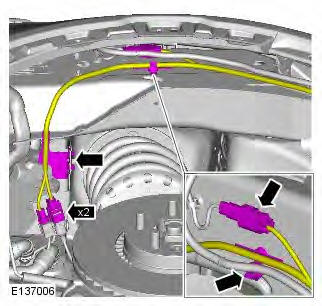
24.
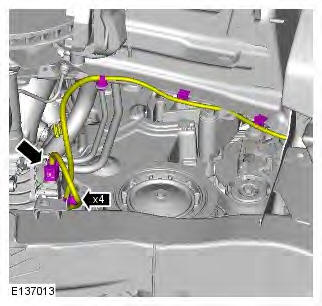
25. WARNING: Be prepared to collect escaping fluid.
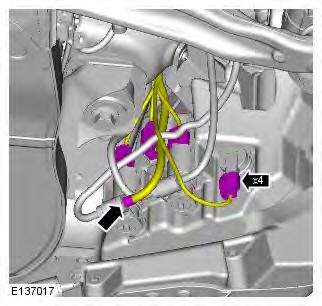
26.
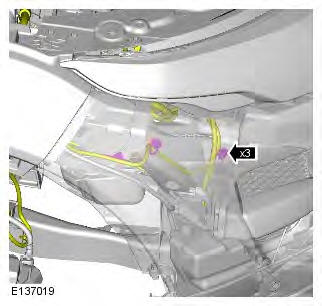
27. Refer to: Secondary Bulkhead Center Panel - TD4 2.2L Diesel (501-02 Front End Body Panels, Removal and Installation).
28. Refer to: Anti-Lock Brake System (ABS) Module (206-09A Anti-Lock Control, Removal and Installation).
29. Refer to: Brake Booster (206-07 Power Brake Actuation, Removal and Installation).
30.
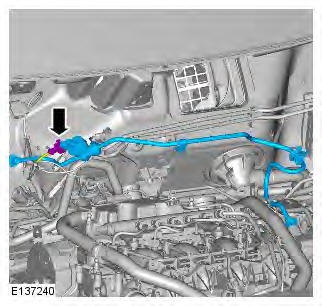
31. Torque: 10 Nm
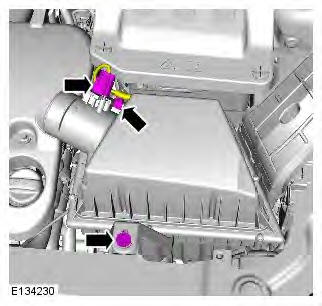
32.
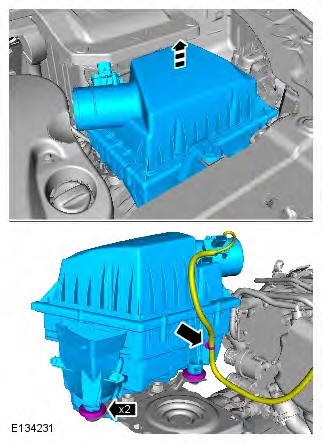
33. Torque: 25 Nm
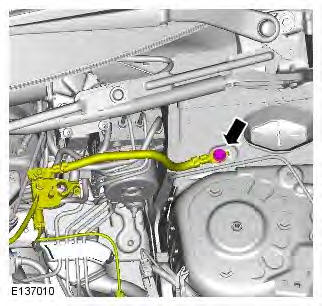
34. Torque: 10 Nm
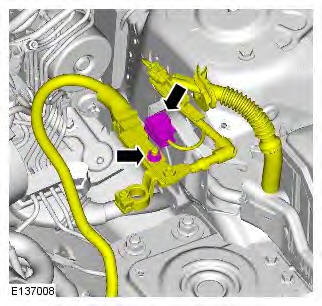
35.
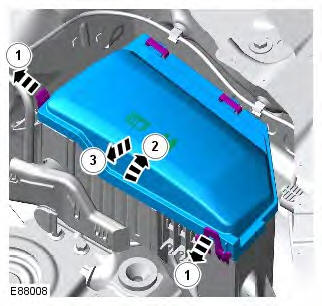
36. Torque: 10 Nm
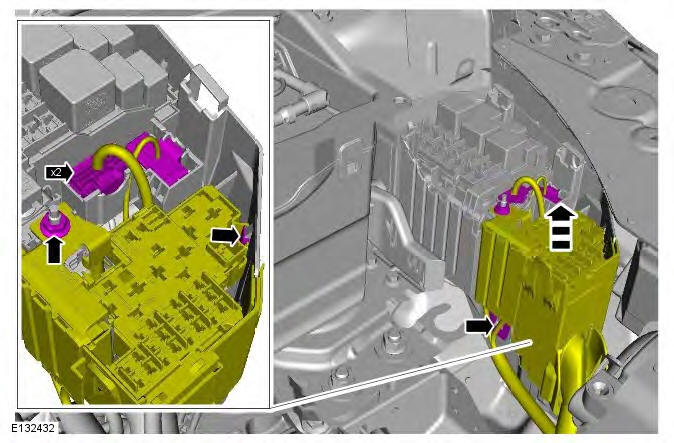
37. Torque: 10 Nm
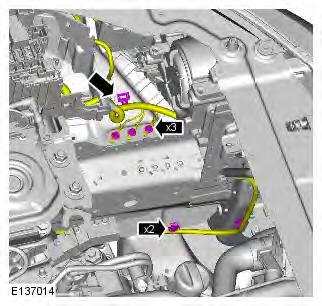
38.
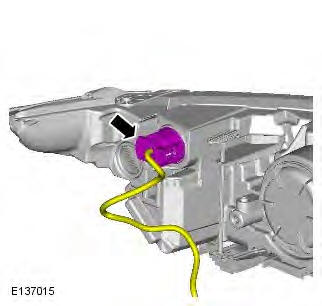
39.
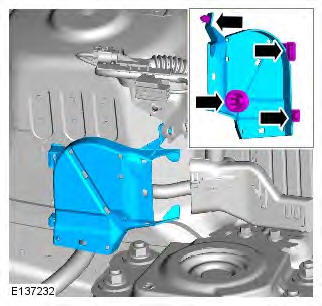
40. Torque: 10 Nm
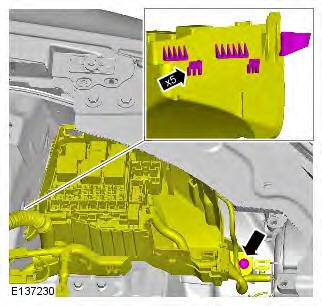
41.
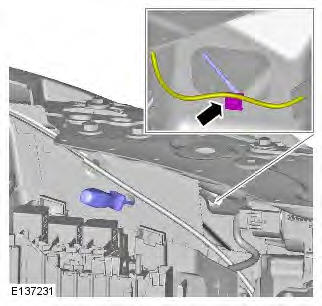
42. WARNING: Be prepared to collect escaping fluid.
CAUTION: If brake fluid is spilt on the paintwork, the affected area must be immediately washed down with cold water.
Torque: 14 Nm
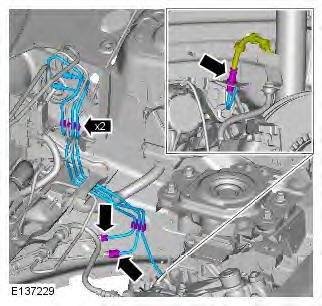
43. WARNING: Be prepared to collect escaping fluid.
CAUTION: If brake fluid is spilt on the paintwork, the affected area must be immediately washed down with cold water.
Torque: 14 Nm
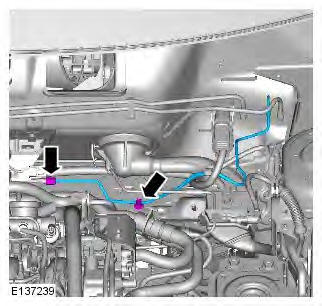
Vehicles with manual transmission
44. WARNING: Be prepared to collect escaping fluid.
CAUTION: If brake fluid is spilt on the paintwork, the affected area must be immediately washed down with cold water.
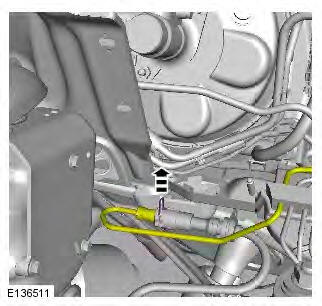
45. WARNING: Be prepared to collect escaping fluid.
CAUTION: If brake fluid is spilt on the paintwork, the affected area must be immediately washed down with cold water.
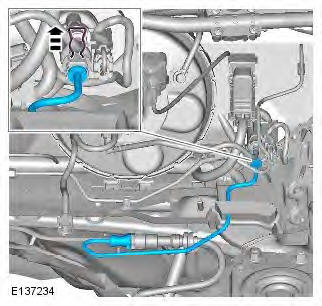
All vehicles
46. Torque: 25 Nm
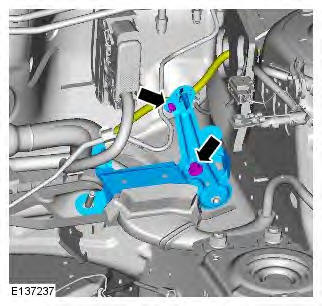
Vehicles with manual transmission
47.
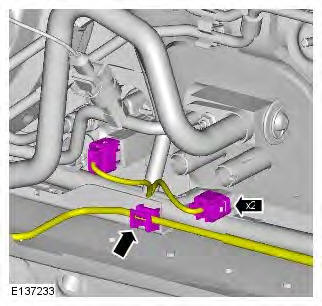
All vehicles
48.
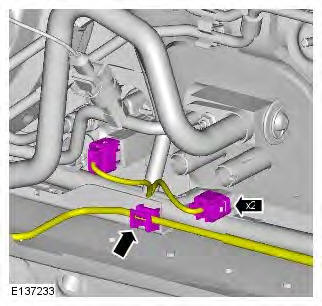
49. WARNING: Be prepared to collect escaping fluid.
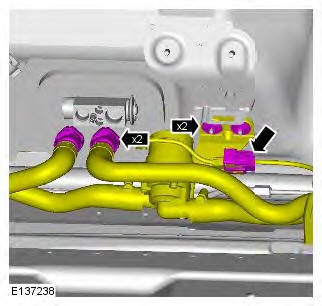
50.
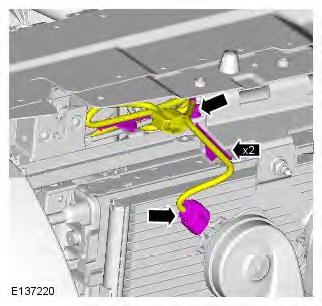
51.
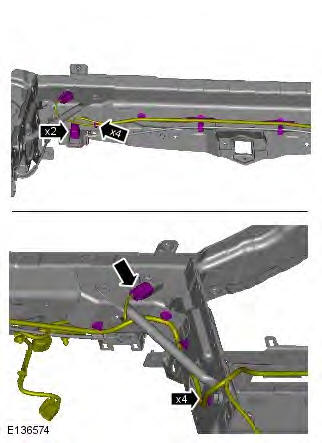
52. Refer to: Coolant Expansion Tank (303-03A Engine Cooling - TD4 2.2L Diesel, Removal and Installation).
53.
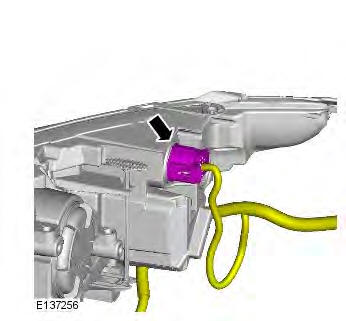
54. Torque: 7 Nm
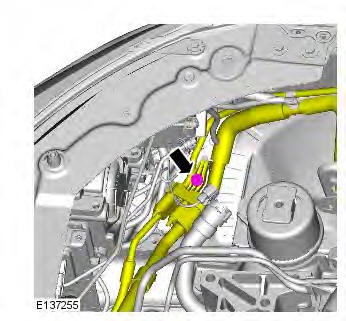
55. Torque: 10 Nm
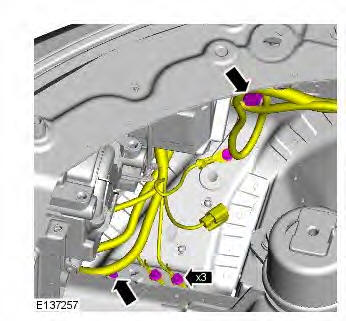
56.
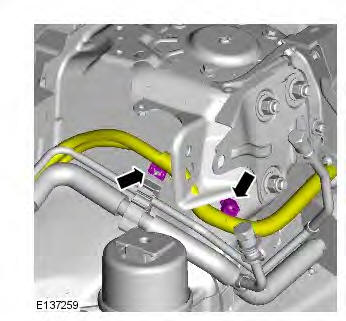
57. Torque:
Bolt 10 Nm
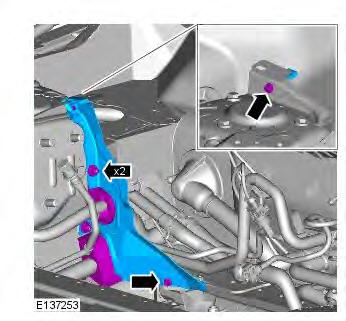
Right-hand drive vehicles
58. WARNING: Be prepared to collect escaping fluid.
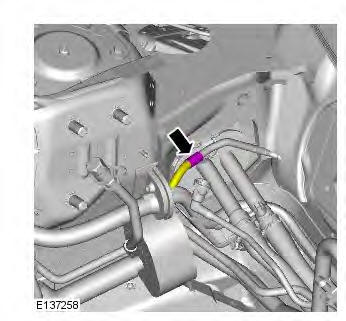
Vehicles with fuel fired booster heater
59.
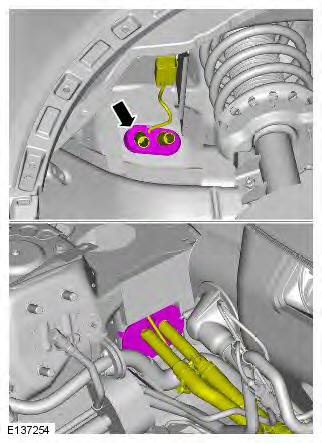
All vehicles
60.
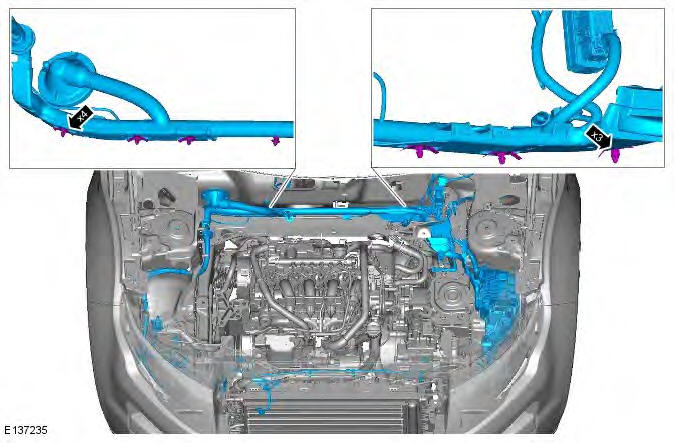
Installation
1. To install, reverse the removal procedure.

